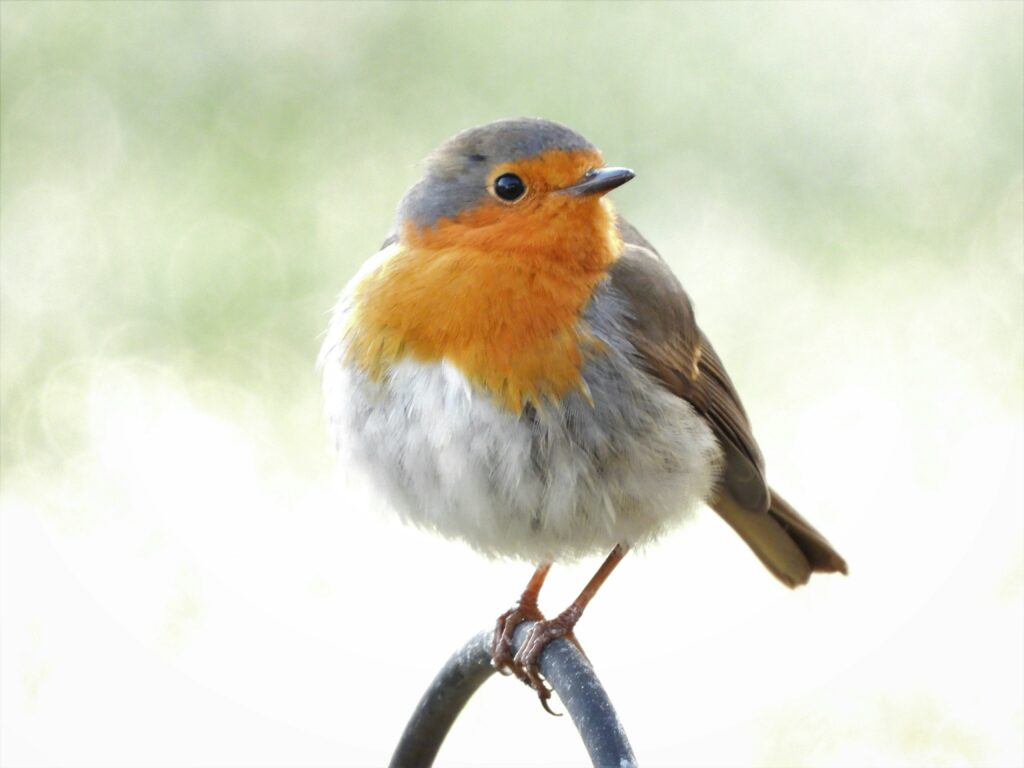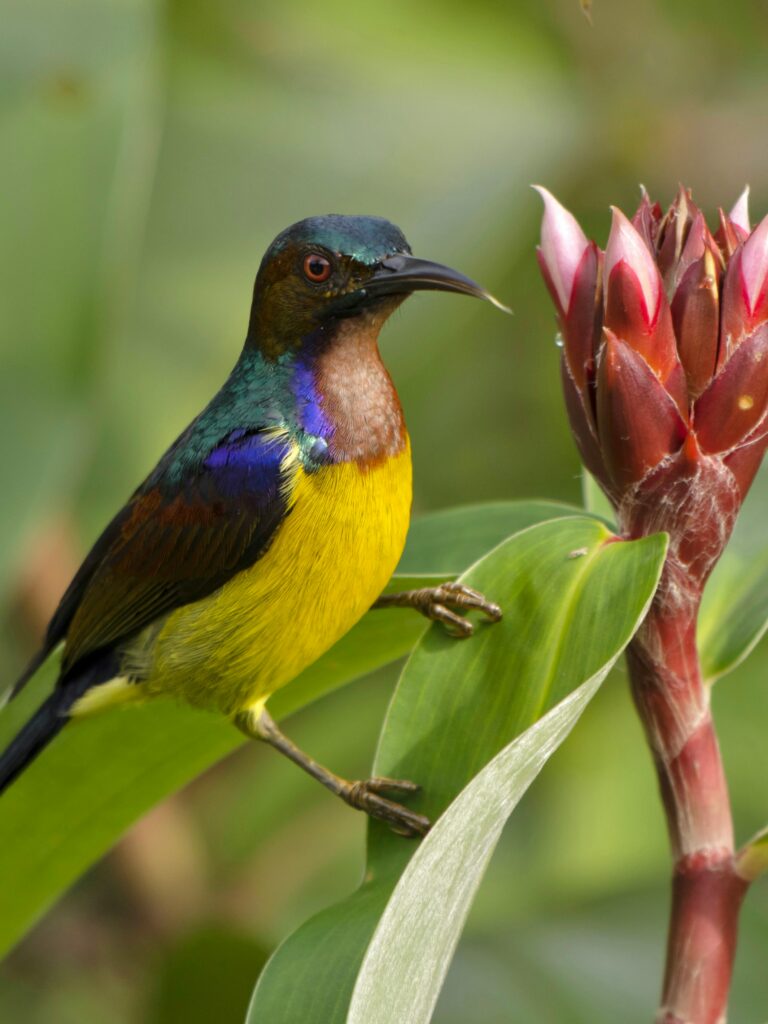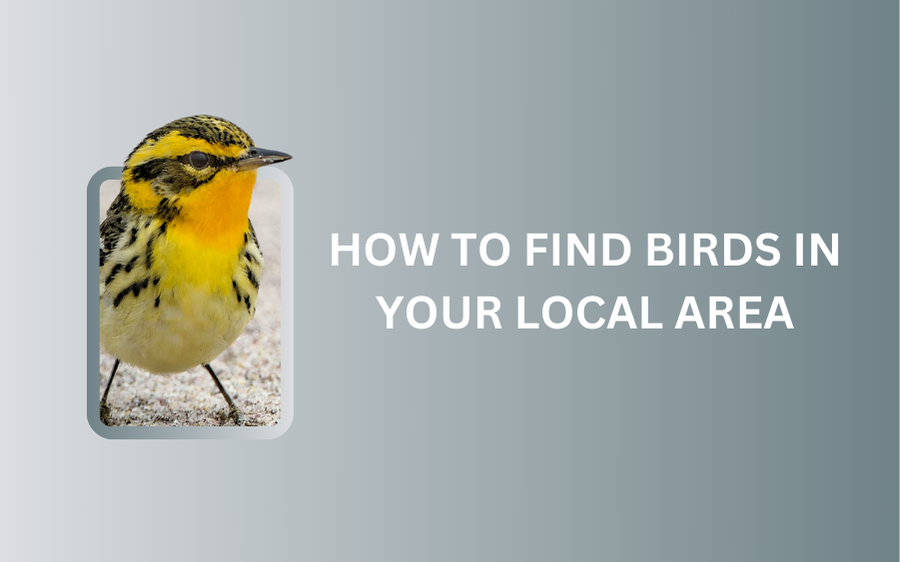Whether you’re a seasoned birder or just dipping your toes into the world of birdwatching, there’s a treasure trove of birds waiting to be discovered right in your own backyard. In this post, we’ll delve deeper with tips to help you embark on exciting birdwatching adventures close to home. So, grab your binoculars, pack your favourite bird book, and let’s go find some birds!
Start Close to Home:
The beauty of birdwatching lies in its accessibility – you don’t need to venture far to encounter fascinating wildlife experiences. Begin your birding journey by exploring the natural areas nearest to you. Whether it’s a local park, nature reserve, or even your own backyard, these urban oases are often teeming with avian life. Take a stroll on a quiet street in your neighborhood, find a wild corner in the nearest park, or simply sit quietly and observe from a bench. You’ll be amazed at the diversity of birds that call most urban spaces home.
For example, if you find yourself in the bustling metropolis of New York City, Central Park is a renowned birding hotspot that attracts both locals and tourists alike. With its lush greenery and diverse habitats, Central Park is a haven for migratory birds as well as resident species such as American Robins, Northern Cardinals, and even Red-tailed Hawks. Join a guided birding walk or explore on your own – either way, you’re bound to encounter some feathered surprises!

Research Local Hotspots:
To enhance your birdwatching experience, take advantage of online resources, birding apps, and guidebooks to uncover hidden gems in your area. From the birding location maps on the Konkoit Wildlife App to regional birding forums, there’s a wealth of information at your fingertips to help you pinpoint prime birding locations. Look for areas known for their diverse habitats, including wetlands, forests, and coastal environments. These ecologically rich areas provide critical habitat for a wide range of bird species, making them ideal destinations for birdwatchers of all levels.
For instance, if you are lucky enough to live in the Pacific Northwest region of the United States, consider visiting the Nisqually National Wildlife Refuge near Olympia, Washington. Situated at the southern end of Puget Sound, this sprawling refuge encompasses many diverse habitats including saltwater estuaries, freshwater marshes, and riparian forests. Home to over 300 species of birds, including migratory waterfowl, shorebirds, and raptors, Nisqually offers excellent opportunities for birdwatching amidst stunning natural scenery.
Visit During the Right Time and Season:
Timing is crucial when it comes to birdwatching, so be sure to plan your outings accordingly. Many bird species are most active during the early morning hours or late afternoon, when they’re busy foraging for food or engaging in courtship displays. Keep an eye on weather patterns and seasonal changes, as these factors can influence bird behavior and migration patterns. By timing your visits strategically, you’ll increase your chances of encountering a diverse array of bird species.
Consider the majestic city of Cape Town, South Africa, where the Cape Peninsula offers prime birding opportunities year-round. During the austral summer months (November to March), the peninsula is alive with the sights and sounds of resident birds such as African Penguins, Cape Sugarbirds, and Southern Double-collared Sunbirds joined by visitors from the Northern Hemisphere such as Barn Swallows, Common Buzzards, European Bee-eater and Osprey if you are very lucky. In the winter months (June to August), migratory species from the Antarctic such as Antarctic can be spotted along the coastline. Depending on the season, there is always something new and exciting to see.
Use Your Senses:
Birdwatching is a multisensory experience that engages all of your senses, so be sure to tune in to the sights, sounds, and smells of the natural world around you. While visual observation is key, don’t underestimate the power of your other senses when it comes to birdwatching. Train your ears to recognize different bird calls and songs, as these vocalizations can provide valuable clues to the presence of birds in the area. Be patient and attentive, and don’t be afraid to pause and listen quietly for a few moments.
For example, if you are living in a tropical area and wander into a forested park or reserve, you’ll be surrounded by a cacophony of bird calls and songs at all hours of the day. Keep your ears tuned to the variety and location of these calls, as these sounds will often be the only way to locate and then see shy birds moving around high in the canopy.
Be Observant:
Developing keen observational skills is essential for successful birdwatching, so hone your powers of perception and attention to detail as you explore your local birding hotspots. Pay close attention to factors such as bird size, shape, coloration, and behavior, as these characteristics can help you identify different species in the field. Look for movement in the trees or bushes, and use your binoculars to get a closer look when necessary. Use a field journal, birding notebook or birding app to record your sightings and observations – not only will this help you track your progress as a birder, but it will also deepen your appreciation for the natural world around you.

Respect Wildlife and Habitat:
As responsible birdwatchers, it’s important to observe birds from a respectful distance and minimize our impact on their environment. Avoid disturbing nesting sites or sensitive habitats, and always stay on designated trails when exploring natural areas. Avoid overusing audio playback to lure birds closer as this can cause stress, often disturbs breeding patterns and potentially cause a local population to eventually abandon a specific patch of habitat.
Follow any posted regulations or guidelines, and remember to leave no trace – take care to pick up any litter and dispose of it properly. Always respect private property.
Conclusion:
We hope these tips will inspire you to embark on your own birdwatching adventures and explore the rich diversity of avian life that surrounds you. Whether you’re birding in a bustling urban park, a remote wilderness area, or anywhere in between, there’s always something new and exciting to discover in the world of birds. Happy birding!

